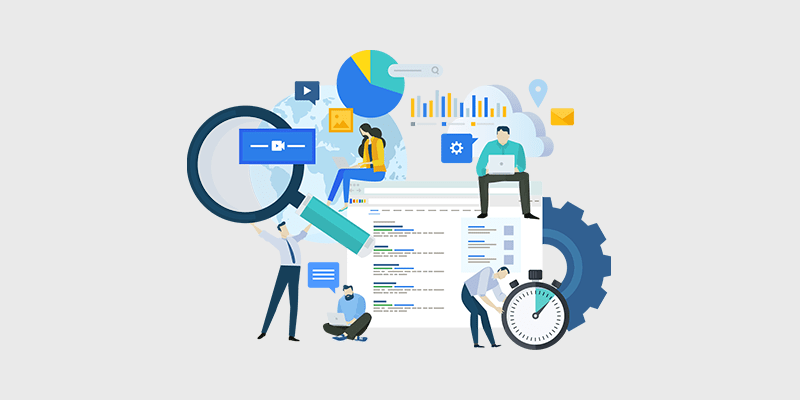
Have you ever asked, How do I apply SEO to Blogger? If you are eager to make your Blogger blog more discoverable, attract a larger audience and improve your online presence you are not alone. In this compressive guide, we will answer your question and provide simple steps to unravel the mystery of applying Search Engine Optimization
(SEO) to your Blogger platform. Let’s embark on a journey to enhance your blog’s reach and make your content more accessible to the vast online community.
Understanding SEO and its importance for bloggers
Search Engine Optimization (SEO) is the process of improving a website’s visibility and ranking on search engine results pages (SERPs). For bloggers, implementing SEO techniques can significantly impact the reach and success of your blogs. By optimizing your Blogger platform, you can increase organic traffic, attract more readers and establish a strong online presence. Blogger is a user-friendly platform, but applying SEO principles can significantly enhance your blog’s performance. It helps your content reach a wider audience, improves your blog’s visibility and ultimately drives more traffic.
Simple Steps to Unravel the Mystery
Simple steps that empower you to navigate the world of Search Engine Optimization effortlessly. Let’s demystify SEO and take your Blogger blog to new heights.
1. Keyword Research: Lay the Foundation

Keywords are the building blocks of SEO. To start applying SEO to your Blogger blog, it is important to conduct thorough keywords research. Keywords are the words and phrases that users type into search engines when looking for specific information. By identifying relevant keywords for your blog niche, you can create content that aligns with what your target audience is searching for. Once you have your keywords, it is time to optimize your Blogger blog for search engines.
2. Craft Engaging Blog Post Titles
Your blog post title is the first thing readers see. Create titles that are both compelling and keyword-rich. Think about what users might search for and incorporate those terms into your titles. Make them intriguing to encourage clicks.
3. Optimizing Blog Post URLs
URLs should be concise and reflect the content of your blog post. Avoid long and confusing URLa. keep them simple, descriptive and easy for both readers and search engines to understand.
4. Write SEO-Friendly Meta Descriptions
- Include target keywords in titles.
- Keep titles short and compelling.
- Use action verbs or numbers for added appeal.
- Write concise meta description with target keywords.
- Highlight unique benefits in meta description.
- Avoid generic or duplicate meta depictions.
5. Incorporating Keywords in Your Content
- Understand keywords density (aim for 1-2%).
- Use keywords in headings and subheadings.
- Explore keywords variations for density.
- Sprinkle keyword variations for diversity.
6.Optimizing Images for SEO
- Use descriptive file names with keywords.
- Optimize image size and format for faster loading.
- Add alt text with relevant keywords for accessibility.
7. Internal Linking: Connect Your Content

Internal linking involves linking to other relevant posts within your blog. This not only helps readers discover more of your content but also provides a clear structure for search engines to navigate.
8. Build Quality Backlinks
Backlinks from other websites to your blog are a significant SEO factor. Create shareable content that naturally attracts backlinks. Consider guest posting or engaging in online communities related to your niche to build valuable links.
9. Regularly Update Your Blog
Search engines love fresh content. Regularly update your blog with new posts or revisit and update existing ones. This signals to search engines that your blog is active and relevant.
Monitoring and Adapting Your SEO Strategy
SEO is an ongoing process. Monitor your blog’s performance using tools. Adapt your strategy based on what works best for your blog and your audience.
Organic Traffic: Monitor the amount of organic traffic your blog receives from search engines. Tools like Google Analytics can provide valuable insights into the keywords and sources driving traffic to your blog.
Search Engine Rankings: Regularly check your blog’s ranking for target keywords on search engine results pages. This will help you identify areas that need improvement and track the progress of your SEO efforts.
Backlink Profile: Monitor the quality and quantity of backlinks pointing to your Blogger blog. Tools like Ahrefs or Moz can provide in-depth analysis of your backlink profile, helping you identify opportunities for improvement.
Blogger Success with Los Angeles SEO Marketing

Elevate your Blogger experience with Top Los Angeles SEO Marketing Agency, your go-to destination for unraveling the mysteries of SEO. In this comprehensive guide, we have tailored simple steps specifically for Blogger users, ensuring a seamless journey to boost your blog’s visibility. With Los Angeles SEO Marketing as your trusted companion, demystifying SEO becomes an effortless endeavor. Lets embark on this tailored adventure together enhancing your Blogger blog’s reach and making your online presence shine.
Conclusion
Applying SEO to your Blogger blog doesn’t have to be complicated. By incorporating these simple yet effective strategies, you can enhance your blog’s visibility and attract a larger audience. Remember SEO is a journey not a destination. Stay committed, adapt to changes and watch your blog thrive in the digital landscape. Happy blogging!